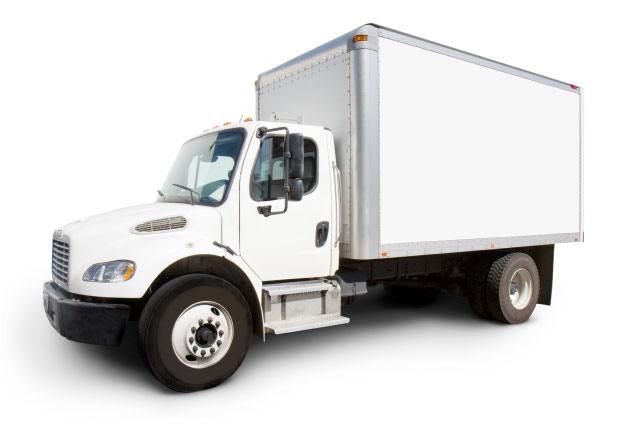Lone Warrior: Mastering Heavy Lifting by Yourself
Posted on 14/06/2025
Lone Warrior: Mastering Heavy Lifting by Yourself
Imagine entering the gym alone, just you and the iron. No spotters, no distractions. Standing in front of a loaded barbell, you are ready to push your physical and mental boundaries. This is the path of the Lone Warrior--the individual who dares to master heavy lifting by themselves.
Whether you choose to train solo by necessity or by design, heavy lifting by yourself can be a highly rewarding experience. It offers unmatched focus, an opportunity for self-discovery, and most importantly--the power to set, meet, and exceed your personal goals without external interference. However, it demands careful planning, safety preparations, and unwavering discipline.
Why Lift Heavy Alone? The Appeal of Solo Strength Training
Solo heavy lifting has gained increasing popularity among fitness enthusiasts. But what draws lifters to embrace solitude in their strength journey?
- Flexible Scheduling: No need to coordinate with a partner. Train when it suits you.
- Personalized Focus: 100% attention on your own program and progress.
- Mental Fortitude: Builds self-reliance, self-discipline, and mental toughness.
- No Peer Pressure: Eliminate competition and ego lifting--you're only accountable to yourself.
- Quieter Environment: Perfect for those who value peace and a distraction-free training session.
However, the journey of the Lone Warrior comes with unique challenges--chief among them, safety and effective programming. Mastering heavy lifting by yourself means learning how to push limits while staying protected.

Essential Safety Tips: Protecting Yourself as a Lone Warrior Lifter
Nothing matters more than your safety when tackling heavy weights without a spotter. Here's how to make solo heavy lifting secure and productive:
1. Know Your Limits
Respect your current strength levels. Avoid ego lifting and never attempt a personal record unless you are absolutely sure of your capability. Gradually increase weights as you progress with perfect form.
2. Use Proper Equipment
- Power Rack or Squat Rack: Invest in a sturdy rack with adjustable safety pins. This is your best spotter.
- Quality Barbell and Plates: Good gear is less likely to fail and can handle heavier loads.
- Weightlifting Belt: Provides crucial support for your lower back during maximal lifts.
- Chalk: Improves grip and reduces risk of bar slip.
- Proper Footwear: Stable, flat shoes help maintain balance during lifts.
3. Master Failsafe Strategies
- Bench Press: Always set safety pins just above chest height. In the worst-case scenario, you can rest the barbell on them.
- Squats: Adjust the safety bars so that you can drop the bar in a deep squat without getting trapped. Moving out from under the bar should be rehearsed.
- Deadlifts: Since the risk of pinning is low, prioritize good form and avoid weights that compromise your back or grip.
- Overhead Lifts: Clear the space and use bumper plates so you can safely drop the bar if needed.
4. Maintain a Clear Training Space
No clutter, stray plates, or trip hazards. This is crucial if you need to move, ditch the bar, or reset quickly.
5. Always Warm Up Thoroughly
Dynamic stretches, foam rolling, and lighter sets prepare your body and mind, reducing chance of injury. Don't skip this sequence!
Programming Principles: Structure for Solo Success
To master heavy lifting by yourself, it isn't enough to just 'show up and lift heavy.' Programming is your strategic map. Here's how to create an effective solo heavy lifting plan:
Progressive Overload
Systematically increase the weight, reps, or sets over time. Progression prevents plateaus and ensures continual adaptation.
Strength-Oriented Compound Movements
- Squat Variations: Back squat, front squat, box squat
- Deadlift Variations: Conventional, sumo, Romanian
- Bench Press and Overhead Press: Mainstay lifts for upper body strength
- Rows and Pulls: Pendlay row, pull-ups, chin-ups
Optimal Volume and Frequency
The sweet spot for most lone lifters is 3-4 strength sessions per week, allowing for high intensity and enough recovery. Track sets, reps, and loads diligently for consistency.
Intelligent Rest and Recovery
Solo training means your sessions can be as long or short as you like. Listen to your body: Quality sleep, hydration, and proper nutrition are your best allies in recovery.
Essential Gear for Heavy Lifting Alone
Upgrading your home gym or lifting setup? These items are particularly critical for heavy lifting solo warriors:
- Power Rack with Safety Arms: Your primary safeguard for squats, presses, and more.
- Olympic Barbell and Plates: Choose recognized brands for safety and durability.
- Inexpensive Crash Pads: Reduce noise, save your floor, and add safety when failing a lift.
- Weightlifting Straps: Useful on heavy pulls if grip fails before your muscles do.
- Mirrors or Cameras: Self-monitor your form to avoid bad habits.
- Rapid Emergency Contact Device: Keep your smartphone on hand, or install a smart speaker. Voice commands can alert someone if serious injury occurs.
Bonus gear: Resistance bands, mobility tools, chalk bowl, cleaning kit for equipment, and upbeat playlists to keep you motivated.
Solo Warrior Mindset: Developing Mental Fortitude
Beyond muscle and gear, mental strength sets lone heavy lifters apart.
Accountability Systems
- Track every session in a journal or app
- Film your lifts for honest form assessment
- Set weekly and monthly goals--review and adjust regularly
Motivation Techniques
- Visualization: Picture yourself nailing each rep before stepping to the bar
- Positive Self-Talk: Replace fear with courage--remind yourself of past successes
- Music & Environment: Craft an atmosphere that energizes you
Learn From Others--Virtually
Just because you lift solo doesn't mean you can't learn from others. Join online communities, study videos of elite lifters, and participate in virtual challenges to stay inspired.
Common Mistakes When Lifting Heavy Alone (& How to Avoid Them)
Pitfalls are avoidable if you're vigilant about your approach. Watch out for these frequent errors:
- Skipping Warmups: Leads to decreased performance and risk of strains.
- Improper Failsafe Setup: Omitting safety pins or training without a rack is a recipe for injury.
- Neglecting Form: Sacrificing proper technique in pursuit of heavier weights causes bad lifting habits and injury.
- Overtraining: Without accountability, it's easy to go too hard. Deload every 4-8 weeks.
- Lack of Emergency Preparedness: Always keep a means of contacting help if necessary.
Example Workouts: Solo Heavy Lifting Sessions
Below are two sample routines for the Lone Warrior. Adjust according to your experience and equipment.
Full-Body Strength (3 Days/Week)
- Day 1:
- Barbell Back Squat: 4x5
- Bench Press (safety pins): 4x5
- Pendlay Row: 3x8
- Day 2:
- Deadlift: 4x5
- Overhead Press: 4x5
- Pull-ups: 3x8
- Day 3:
- Front Squat: 4x5
- Incline Dumbbell Press: 4x6
- Face Pulls: 3x12
Upper/Lower Split (4 Days/Week)
- Day 1: Upper
- Bench Press: 5x5
- Bent-Over Row: 4x8
- Overhead Press: 3x8
- Face Pulls: 3x15
- Day 2: Lower
- Squat: 5x5
- Romanian Deadlift: 4x8
- Calf Raise: 3x12
- Day 3: Upper
- Incline Bench Press: 4x8
- Pull-ups: 4x8
- Push-ups: 2xMax
- Day 4: Lower
- Deadlift: 5x5
- Bulgarian Split Squat: 4x8/leg
- Leg Curl: 3x12
Note: Always adjust intensity, sets, and rest periods based on your individual recovery and goals. Leave one or two reps 'in the tank' for maximal sets when training alone.
When Is It Time to Ask for Help?
Being a lone warrior doesn't mean you're invincible. Certain circumstances call for support:
- Testing true one-rep maxes
- Feeling unwell or recovering from injury
- Trying unfamiliar lifts or new personal records
- Equipment malfunctions
Don't let pride override safety. If in doubt, ask a staff member, friend, or even use remote video supervision for accountability and aid.

Lone Warrior Success Stories
Many legendary lifters built their physiques with solitary, gritty sessions in basements, garages, and empty gyms. Their stories prove the value of solo training:
- Ed Coan -- Powerlifting icon, known for his intense, solitary discipline and methodical training.
- Pavel Tsatsouline -- Advocated personal responsibility, self-coaching, and 'grease the groove' training methods.
- Many strongman champions -- Trained solo due to necessity and cultivated incredible all-body strength.
Conclusion: Embrace Your Inner Lone Warrior
In the end, mastering heavy lifting by yourself is a journey of self-mastery. It requires a dedication to safety, thoughtful programming, the right equipment, and above all--a disciplined, resilient mindset. The path may be solitary, but the rewards are immense. As you embrace the Lone Warrior ethos, remember:
- Always put safety first
- Commit to methodical, progressive improvement
- Invest in quality equipment and self-monitoring tools
- Maintain accountability through journaling and online communities
- Never compromise your form for heavier weights
Solo heavy lifting is more than an act of strength--it's a testament to your commitment, courage, and self-reliance. So step up to the bar, Lone Warrior. Your next PR awaits.





